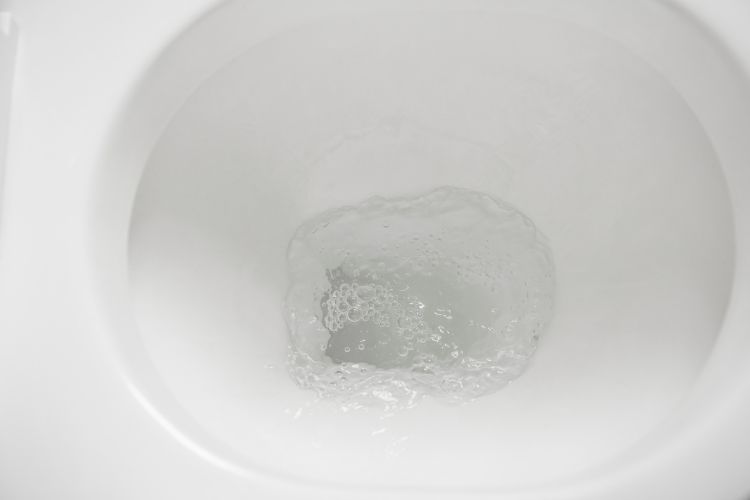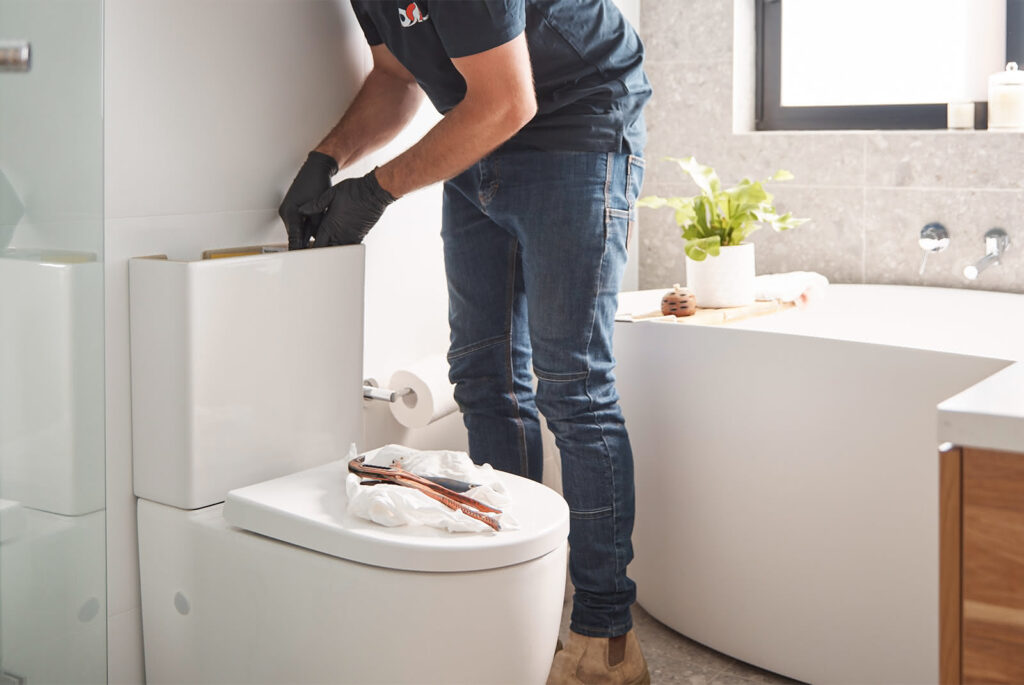
Open 24/7! Servicing all of Sydney’s Eastern Suburbs
Our Average Response time is: 1hr 53min 47sec
We’ve all had that experience of stepping into the shower only to be disappointed by a weak trickle of water. Or, conversely, a spray so strong you're almost blasted back out. But water pressure issues are more than just a shower inconvenience. Besides disrupting daily routines, it can damage your plumbing system, as well as increase utility costs.
This extensive guide will explore the common causes of water pressure problems, share practical steps to diagnose and fix them, and help you determine when it’s time to call in a professional.
Water pressure determines how strong the flow of water is moving through your plumbing system. This can be delivered to your kitchen taps, showers, and appliances such as your garden hose. When water pressure is too low, tasks like filling a bath or rinsing dishes can be slow and frustrating.
Conversely, extremely high pressure can strain pipes and fixtures, potentially leading to leaks and damage over time. Therefore, maintaining balanced water pressure is key to keeping your plumbing system running smoothly.

There are several telltale signs that you have a water pressure issue at home.
Some common signs to watch out for include:
It's clear that water pressure problems are an inconvenience, but they can also impact your overall home functionality, not to mention your wallet. This is because low water pressure often results in wasted water as you spend extra time cleaning or showering. Over time, this inefficiency not only drives up water bills, but strains appliances like washing machines and dishwashers, reducing their lifespan.
On the flip side, ignoring high water pressure issues can lead to costly repairs, including burst pipes and even flooding. What starts as a normal water pressure inconvenience can quickly escalate into a significant plumbing emergency.
The key is to address water pressure problems promptly. This way, you can nip it in the bud and avoid unnecessary expenses. Most importantly, you protect your plumbing system, saving yourself the frustration of dealing with ongoing inefficiencies.
When it comes to diagnosing water pressure issues, we like to ask “why” repeatedly to dig deeper and uncover the root cause of the problem. This approach helps ensure that we’re addressing the source of the issue rather than just the symptoms.
Here are some of the most common culprits behind low water pressure:
By investigating these potential causes, you can nail down the root cause of the problem and determine the best course of action.
Water pressure in your home can be influenced by several factors that may have nothing to do with your internal systems. Some can relate to the design and location of your plumbing system.
For example, homes located far from the local water supplier often experience reduced pressure due to the distance the water must travel. Moreover, if your home is situated at a higher elevation relative to the water source, the law of gravity can cause a drop in pressure. This is especially noticeable in multi-storey buildings.
Then there's the type of piping originally installed for your home's plumbing. Narrow or outdated pipes made from materials prone to corrosion can restrict water flow, resulting in lower pressure throughout the home.
Additionally, if you have several fixtures and appliances using water simultaneously, such as in a larger home with many occupants, the demand for the system can lead to a noticeable drop in pressure. You may have experienced this when two or more people shower at the same time in one household.
By understanding these factors, you can identify whether your water pressure issues stem from normal limitations or if there are deeper plumbing problems that need addressing.
If you’re experiencing issues with water pressure, there are straightforward methods to help determine whether a problem exists.
The first thing we suggest is looking for signs of low pressure. Pay attention to the common symptoms discussed earlier, such as slow-filling sinks, showers that take too long to reach a comfortable flow, or toilets not flushing properly.

Then check the water pressure gauge, if you have one installed. It gives you a clear reading of your home's water pressure and the ideal range is typically between 500 kilopascals (kPa) or less in Australia.
You also search for leaks, damp spots, or visible corrosion on pipes. These can indicate issues with water flow, potentially leading to lower pressure throughout your plumbing system.
There are three main culprits for high water pressure:
When inspecting your plumbing system, start by examining the water mains and pipes for signs of damage. This could be corrosion, cracks or leaks. Ensure the main shut-off valve is fully open, as a partially closed valve can restrict water flow.
Additionally, inspect pipes for mineral deposits or scale buildup, which can reduce water pressure over time. Of course, if any of this overwhelms you, it's time to call a professional.
Inspect all visible pipes for signs of leaks or corrosion, including rust, discolouration and dripping water.
Walls, floors and ceilings are also a good place to monitor. Look for water damage, mould, or rot near plumbing fixtures, as these can indicate hidden issues.
However, sometimes you need to go further for hard-to-detect leaks. A leak detection tool can identify problems within walls or underground. Alternatively, a qualified plumber will have the necessary equipment and will detect your leaking water pipes in no time.
Often, we find that it's faulty plumbing fixtures that contribute to customers' water pressure issues. If you suspect this to be the case, we suggest starting by checking aerators on faucets for clogs or damage. These can restrict water flow.
Also, inspect showerheads and faucets for signs of mineral buildup, which may reduce performance. The same with toilets and other appliances for leaks, as the wastewater can impact overall pressure. Regular maintenance and timely repairs can help keep your fixtures functioning efficiently.
The pressure regulator is installed near the water meter or main water line. The device controls water pressure throughout your home. As such, when it malfunctions, so does your water pressure. You also experience leaks, unusual noises and vibrations.
Check the regulator’s settings and adjust if needed. If it appears old, damaged or corroded, it could be due for replacement.
Whereas water flow refers to how much water moves through pipes, water demand is the total water usage throughout your home.
Calculating water demand is a three-step process:
Aligning water flow and demand is key to maintaining optimal pressure. If you're finding this difficult, consider installing low-flow fixtures. Another tip is spacing out the use of water-intensive appliances throughout the day. For households with high water usage, upgrading to a larger water heater or a tankless model can help ensure consistent water pressure.
Firstly, you'll need to know about any damaged or blocked pipes. Using a pipe inspection camera can help pinpoint blockages or damage within the plumbing system. Once identified, replacing these with durable materials like PEX, copper or galvanised steel pipes can ensure better water flow and long-lasting results. Upgrading older, worn-out pipes can make a significant difference in restoring proper pressure throughout your home.
However, in some instances, you can repair leaks by applying corrosion-resistant coatings to pipes. It's best to speak to a qualified plumber to determine this. In some other cases, installing water pressure booster pumps may be necessary. A booster pump can enhance water flow, especially in homes with low municipal water pressure.
Plumbing is one of the most important aspects of a well-functioning home, and optimising your system is essential to ensure it runs efficiently. Regularly inspect pipes and fixtures and address any problems promptly. Consider upgrading to low-flow fixtures and appliances that not only conserve water but also help maintain consistent water pressure.

If you really want peace of mind and to keep everything in top shape, schedule annual inspections with a professional plumber to catch potential issues early. Additionally, they can perform routine maintenance tasks such as cleaning aerators, checking water pressure, and keeping an eye on your system’s overall condition.
Water pressure issues can be caused by various factors, including clogged pipes, faulty pressure regulators, and high demand on your hot water system. If you’re struggling with persistent water pressure issues which we've discussed and your DIY fixes just aren't working, it’s time to call a professional plumber. With expert knowledge, specialised tools, and liability protection, a professional can quickly diagnose and resolve the problem.
Just remember to ask for referrals, check online reviews, and verify licenses and certifications to find a reliable plumber. Contact the team at Plumberoo today for a hassle-free, reliable plumbing service for all your water pressure needs.